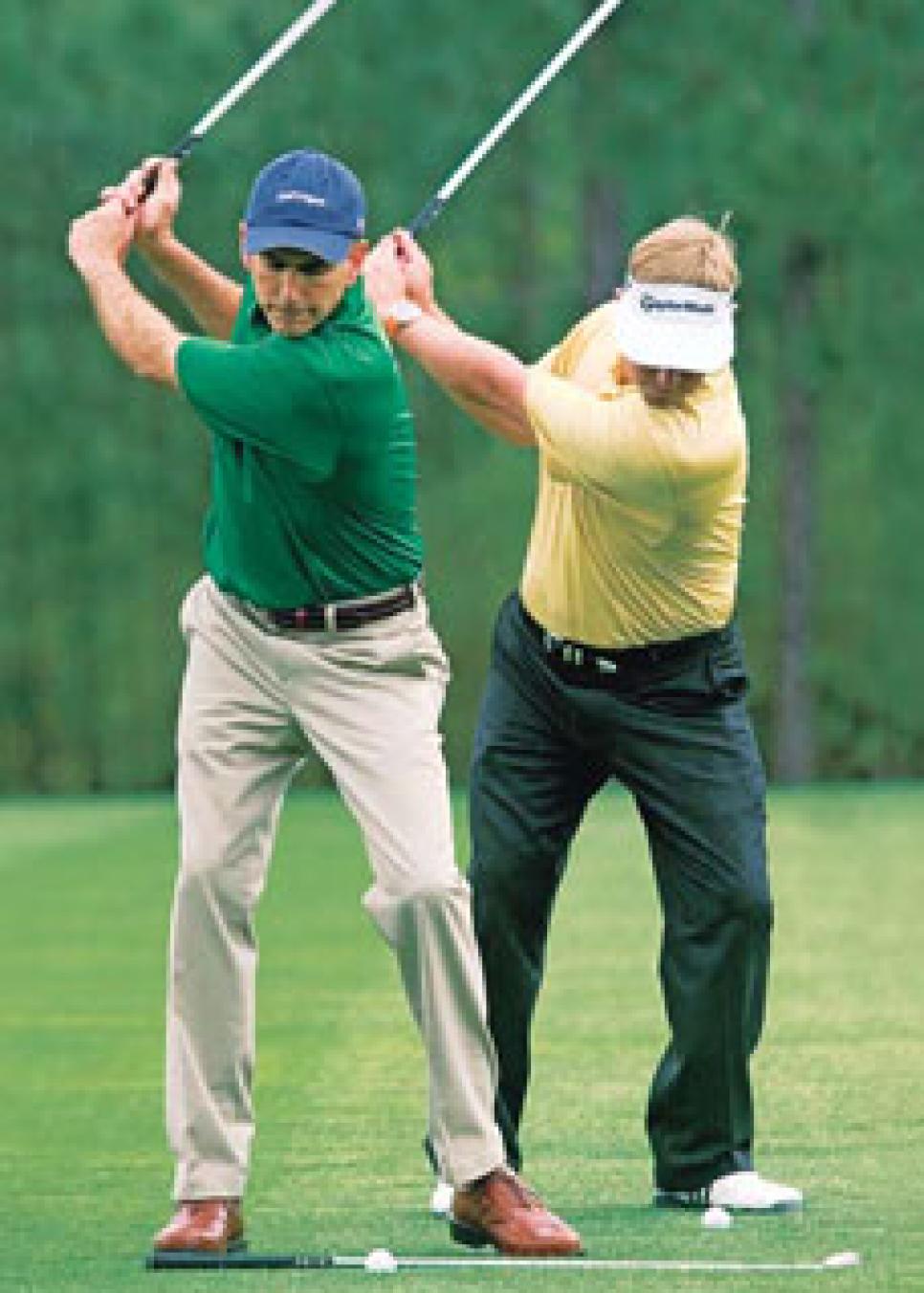Instruction
The New Tour Swing

Senior Editor Peter Finch, who signed up for the Golf Digest Challenge last month, fixes his swing with Mike Bennett. Finch will report on his progress in upcoming issues.
I've always hit my irons short and high, often with a dispiriting, floaty trajectory. Now I know why.
The main problem, as Mike Bennett and Andy Plummer could see right away, was that my swing bottomed out too early. Instead of striking the ground after the ball, I was hitting several inches behind it. To get my shot airborne, I had to scoop at the ball with my wrists—which meant the clubhead got in front of my hands, totally robbing the shot of any zip.
Bennett and Plummer's solution felt odd at first. They had me put roughly 60 to 65 percent of my weight on my left side, with my left shoulder almost level with my right, and my hands slightly ahead of the ball. When I began my swing, they wanted my left shoulder to move down, not laterally.
Taking a few practice swings from this setup, I had the strange sensation I was chopping down on the ball more than swinging through it. I wondered, too, if I might fall over.
But once they dropped a ball at my feet and had me try the swing for real, I was sold. There was a noticeable difference in the "compression," as Bennett termed it, when my 7-iron struck the ball. It came off the clubface with a crack and flew with an altogether unfamiliar trajectory: lower and about 10 yards longer.
The pros didn't stop there. They encouraged me to take a shorter backswing, keeping my arms and torso connected. As I swung through the ball, they had me stretch out my arms, parallel to the ground, and hold them there to get the feel of extension. Finally, they had me work on lifting my belt buckle and arching my spine after impact, to get the club swinging on the right angle.
It worked. Not only was I hitting the ball harder, I was hitting it on the center of the face. So that's what it's supposed to feel like.